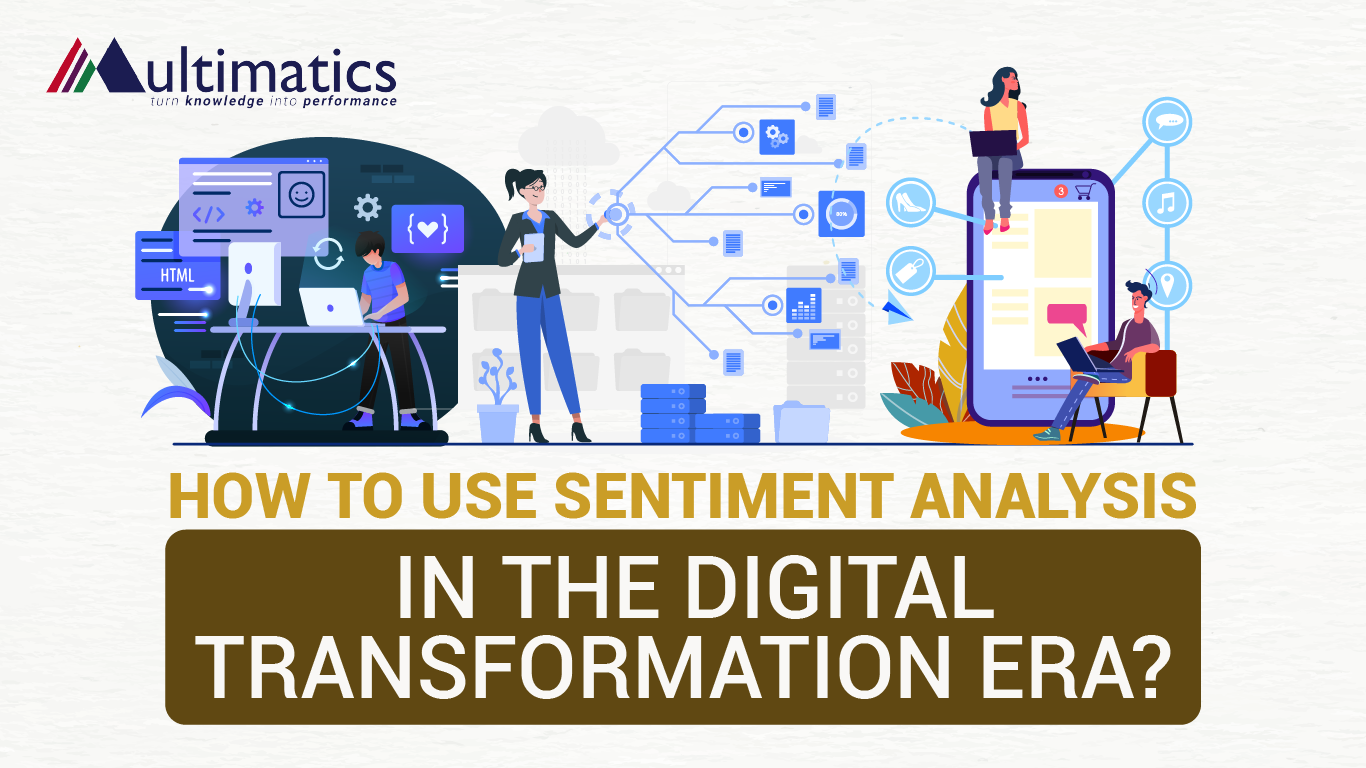

PhD candidate and result-oriented Director with 25 years experience with involvement in all levels of Business Strategy, Sales and Marketing, Managing Project and Product Development. Aside of managing a company, he is also the best corporate trainer and public speaker in seminar and conference.
How to Use Sentiment Analysis in the Digital Transformation Era?
Digitalization within a business enviroment brings the enhanced productivity and also better efficiency security, and convenience to transform the workforce, creating nrew types of digital or virtual work. Nowadays, the role of data is crucial in every business environment. As organization slowly adapt to digital transformation which enabled innovative use of digital technologies accompanied by the strategic leverage of key resources and capabilities, aiming to radically improve an entity and redefine its value proposition for its stakeholders. Digital transformation is not all about technology. We can’t apply digital transformation without the role of data. It can be derived from various sources and process them into into valuable insights. Even when we already process the datasets to our business, we need to ensure its workability and effectiveness.
Digital Transformation is putting organization into a wider ecosystem
There are various implementations of sentient analysis in business, including brand monitoring, social media monitoring, product analysis, customer feedback, and market research. When running campaigns on social media or digital platforms, organizations should understand their customers’ pain points in order to transform them into business revenue. With a great volumes of data, organizations should first understand their products’ or services’ sentiment towards their customers. Organization can use sentiment analysis to effectively process the datasets to detect customers’ intentions toward their product and services. Sentiment analysis focuses on the polarity of a text (positive, negattive, neutral) ut it also goes beyond polarity to detect specific feelings and emotions. This is important to interpret customer feedback and queries to meet the organizations’ sentiment analysis needs.
Utilizing Sentiment Analysis in the Digital Transformation era:
a. Sentiment Analysis Using Product Review Data
Sentiment analysis using product review data provides organization with vital information of their customers’ opinion about the products or services. These reviews usually available online on socual media forums, micro-blogs, or online social networking sites. However, among these reviews there are usually types of online data with several flaws that potentially spam system with irrelevant and meaningless opinions. By using product review data in sentiment analysis, organization can analyze data from the customers’ review about the products or services and conduct comprehensive analysis on product evaluation data to determine which improvement needed to be done.
b. Sentiment Analysis Using Machine Learning
Sentiment analysis using machine learning is an effective method to eliminate misapplied words or sarcasm from the customers’ review. Machine learning allows computers to learn new tasks without being expressly programmed to perform them. Sentiment analysis model can be trainined to read beyond mere definitions to understand things such as context, sarcasm, and misapplied words. There are a number of techniques and complex algorithms used to command and train machines to perform sentiment analysis. However, several tools such as Linear Regression, Naive Bayes, and Support Vector Machines (SVM) can be used to categorize positive, negative, or neutral words to help organizations understand customers’ sentiment in real-time.
Here are the benefits in implementing sentiment analysis in the Digital Transformation era!
- Identify positive, negative, or neutral feedback from customers
- Mitigate potential risks and threats by analysing negative sentiments
- Create a focus-driven improvement based on the customers’ feedback
Utilizing sentiment analysis in the digital transformation is all about helping organizations gain better insights to their customers and help them to minimize potential risks and threats to increase their competitive advantages. It enables organization to have great understanding, alignment, and actioning of their products’ or services to the customers. In addition, sentiment analysis also enable business owners to accurately measure their marketing and campaign performances over time. In this way, they can get relevant feedback to their business in both specific and general points.
Reference:
Pereira, C.S.; Durão, N.; Moreira, F.; Veloso, B. (2022) The Importance of Digital Transformation in International Business.Sustainability 14, 834. https://doi.org/10.3390/su14020834
Reinartz, W., Wiegand, N. and Imschloss, M. (2019), “The impact of digital transformation on the retailing value chain”, International Journal of Research in Marketing, Vol. 36 No. 3, pp. 350-366.
Verhoef, P.C., Broekhuizen, T., Bart, Y., Bhattacharya, A., Dong, J.Q., Fabian, N. and Haenlein, M. (2021), “Digital transformation: a multidisciplinary reflection and research agenda”, Journal of Business Research, Vol. 122, pp. 889-901.
Zhang, Lei; Shuai Wang,Bing Liu. (2018) Deep learning for sentiment analysis: A survey. Funding information Huawei Technologies Co. Ltd; National Science Foundation (NSF), Grant/Award https://doi.org/10.1002/widm.1253